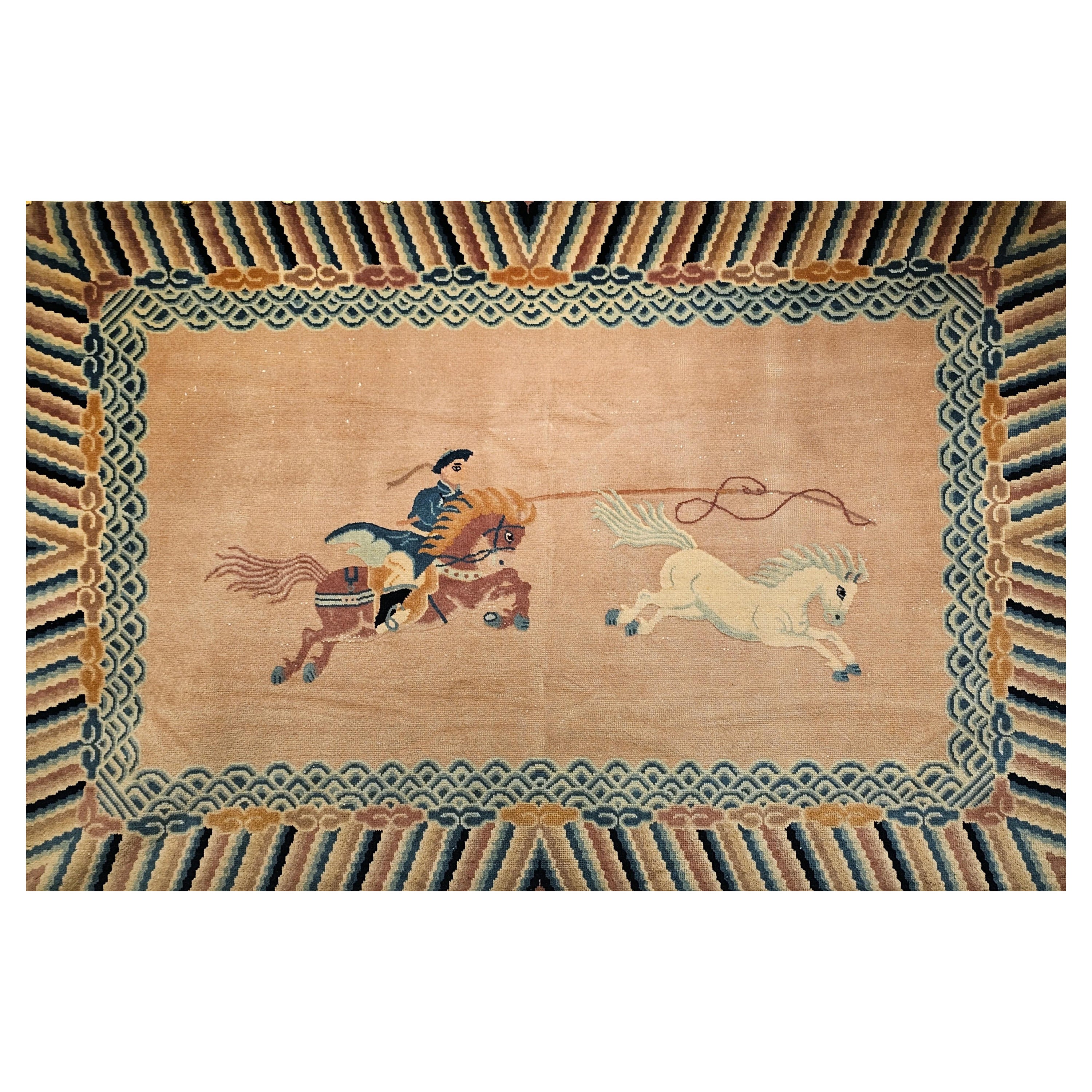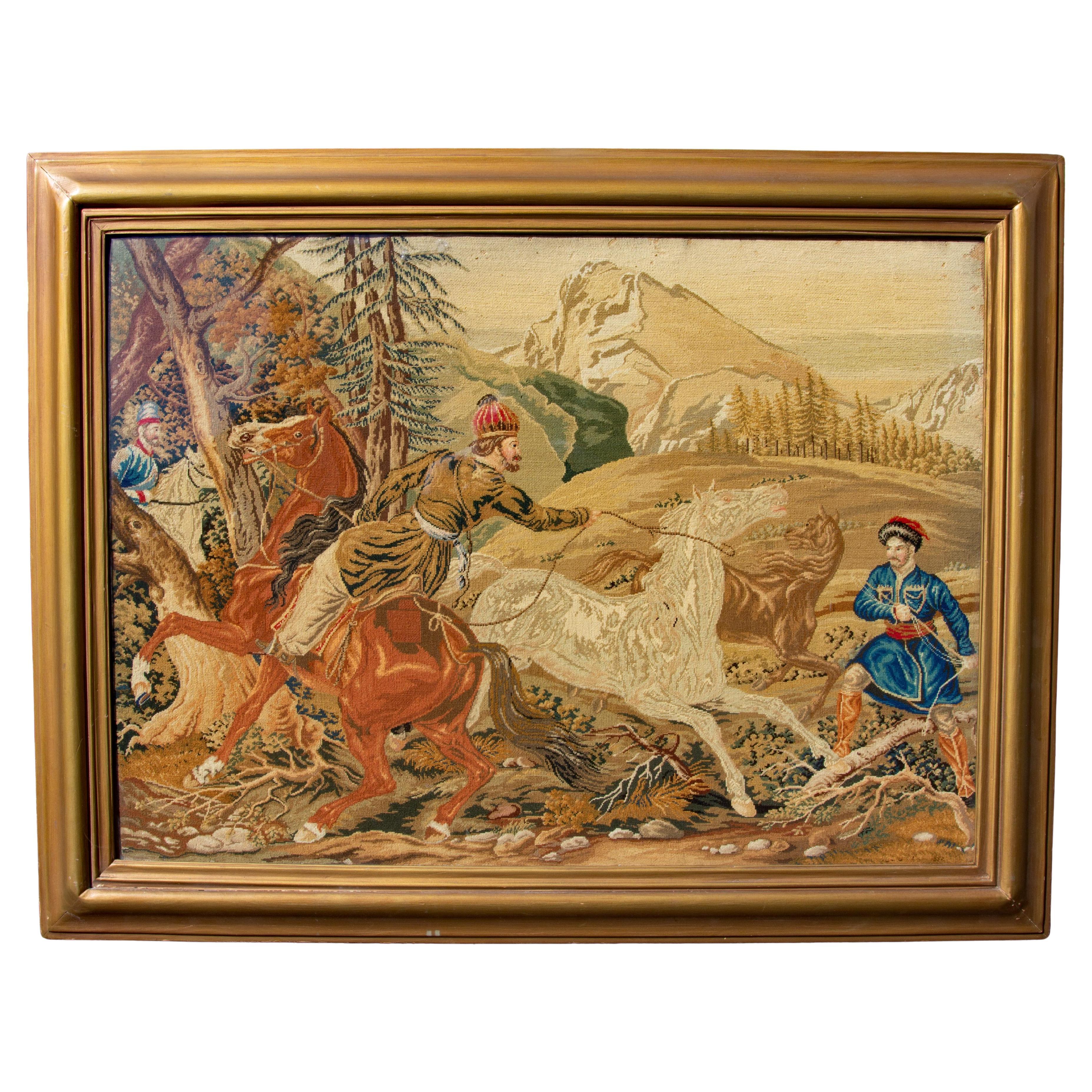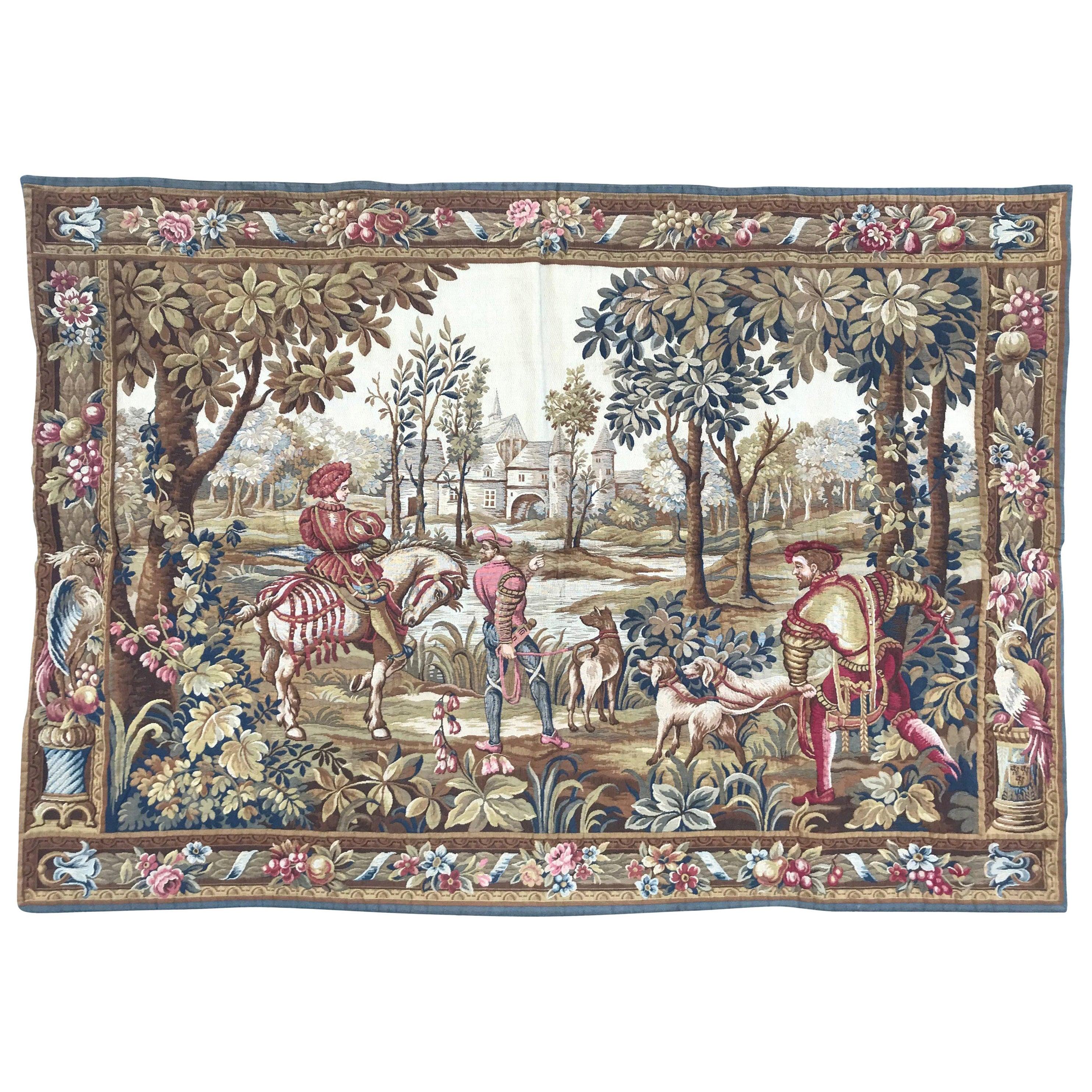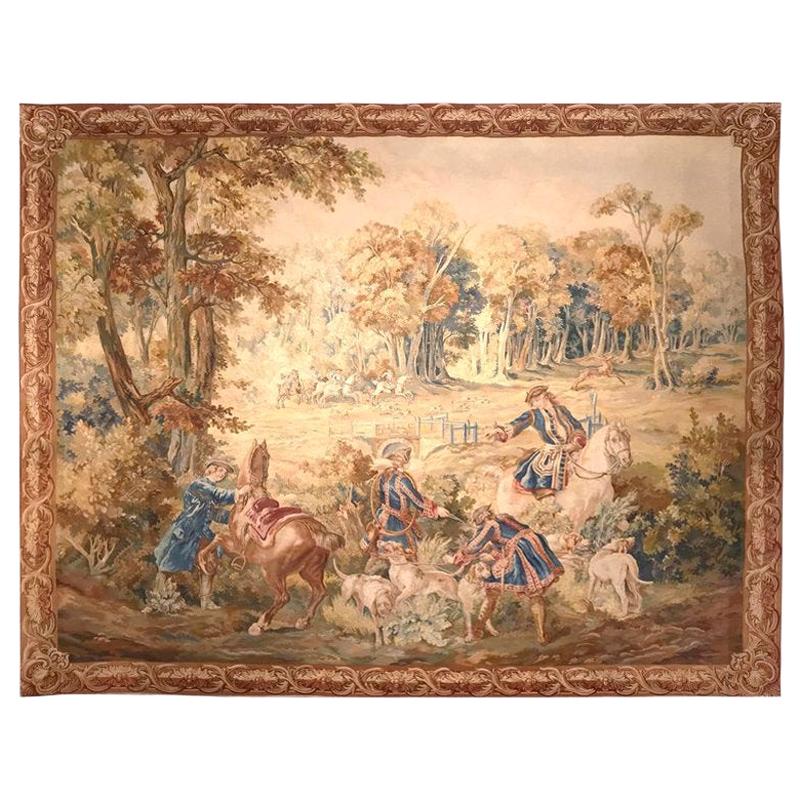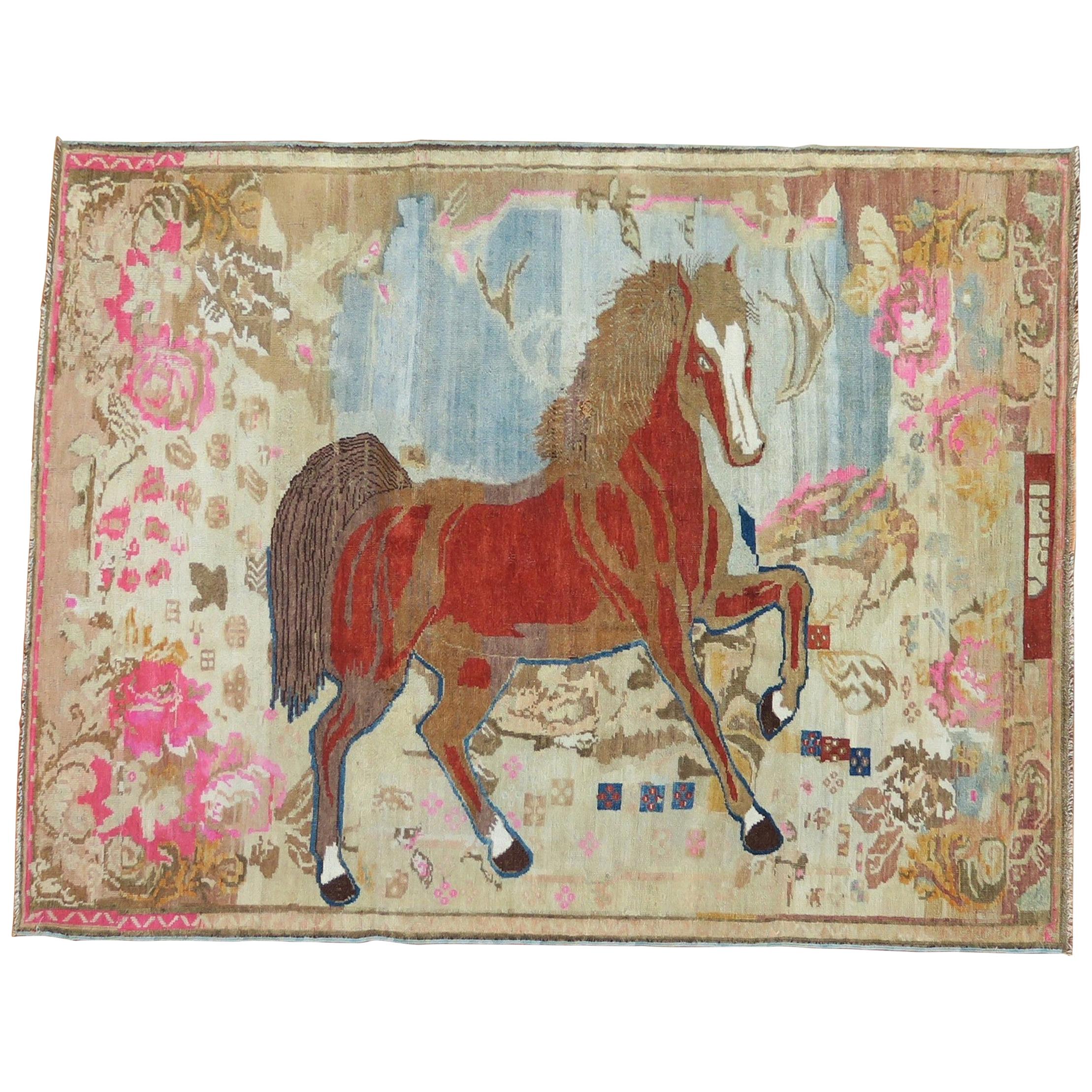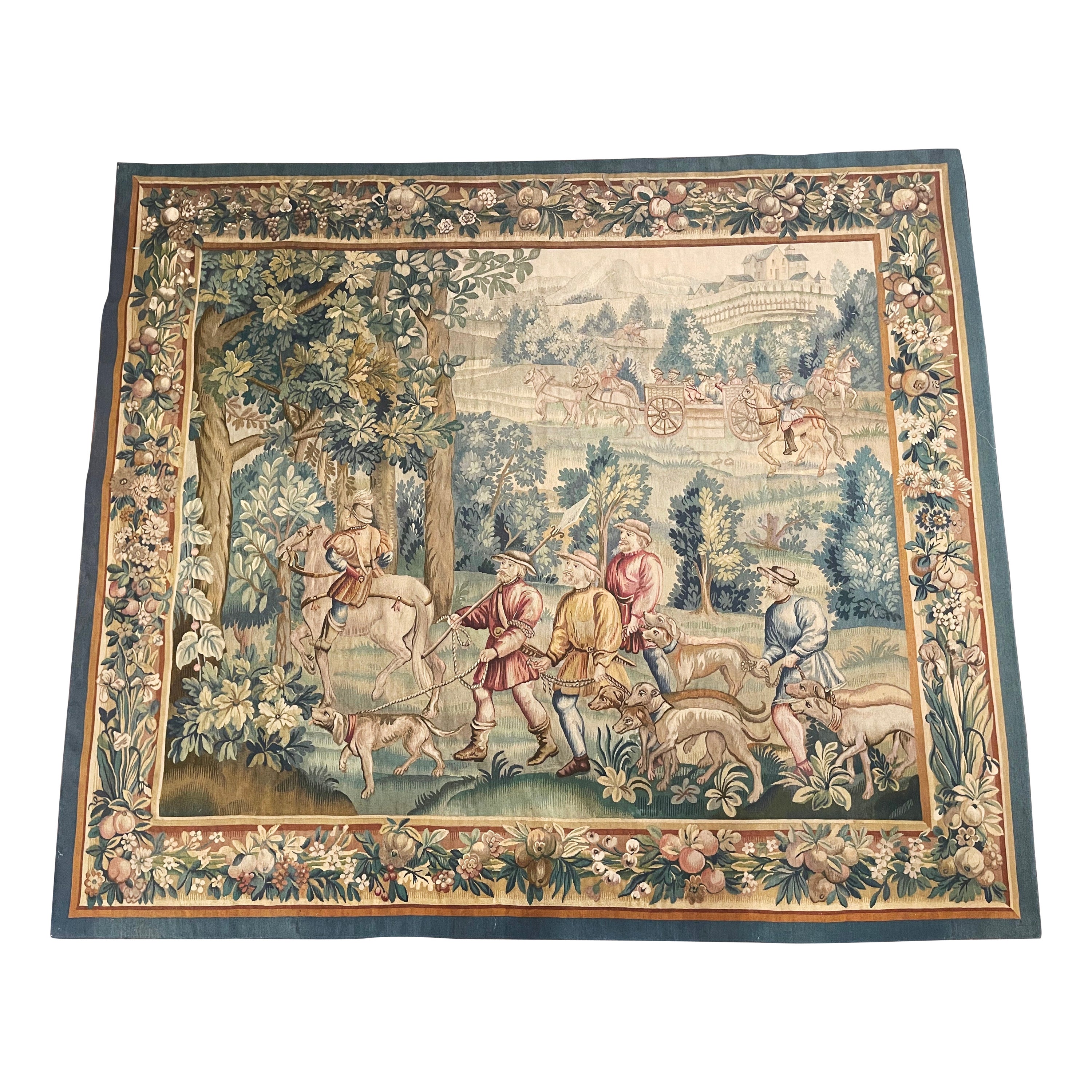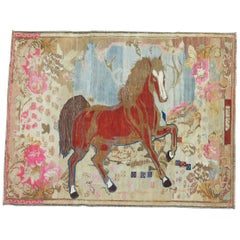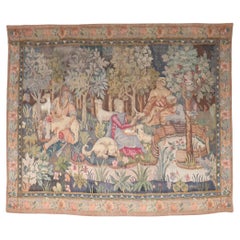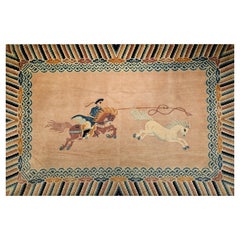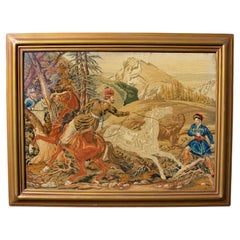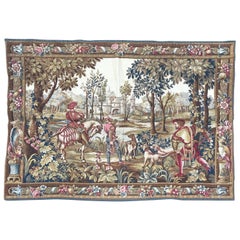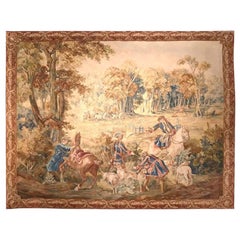Items Similar to Zabihi Collection Horse Scene English Needlepoint
Want more images or videos?
Request additional images or videos from the seller
1 of 15
Zabihi Collection Horse Scene English Needlepoint
$12,275
£9,313.99
€10,649.71
CA$17,144.85
A$19,062.74
CHF 9,953.51
MX$232,039.92
NOK 127,002.44
SEK 118,995.22
DKK 79,480.76
Shipping
Retrieving quote...The 1stDibs Promise:
Authenticity Guarantee,
Money-Back Guarantee,
24-Hour Cancellation
About the Item
an early 20th-century square size English Needlepoint
Measures: 6'10'' x 7'8''
- Dimensions:Width: 82 in (208.28 cm)Length: 92 in (233.68 cm)
- Style:Aubusson (In the Style Of)
- Materials and Techniques:
- Place of Origin:
- Period:
- Date of Manufacture:20th Century
- Condition:no stains or deterioration. has a backing. professionally cleaned.
- Seller Location:New York, NY
- Reference Number:Seller: j3856 J & D Oriental Rug Co. 1stDibs: LU908739149622
About the Seller
5.0
Platinum Seller
Premium sellers with a 4.7+ rating and 24-hour response times
Established in 1975
1stDibs seller since 2011
1,550 sales on 1stDibs
Typical response time: <1 hour
- ShippingRetrieving quote...Shipping from: New York, NY
- Return Policy
Authenticity Guarantee
In the unlikely event there’s an issue with an item’s authenticity, contact us within 1 year for a full refund. DetailsMoney-Back Guarantee
If your item is not as described, is damaged in transit, or does not arrive, contact us within 7 days for a full refund. Details24-Hour Cancellation
You have a 24-hour grace period in which to reconsider your purchase, with no questions asked.Vetted Professional Sellers
Our world-class sellers must adhere to strict standards for service and quality, maintaining the integrity of our listings.Price-Match Guarantee
If you find that a seller listed the same item for a lower price elsewhere, we’ll match it.Trusted Global Delivery
Our best-in-class carrier network provides specialized shipping options worldwide, including custom delivery.More From This Seller
View AllAntique Russian Brown Horse 20th Century Pictorial Wool Decorative Rug
Located in New York, NY
Marvelous one of a kind Pictorial Russian Karabagh rug depicting a large, bold and beautiful horse with a floral scenic background with predominant accent colors in light blue, brigh...
Category
20th Century Russian Folk Art Russian and Scandinavian Rugs
Materials
Wool
Horses Chinese Antique Pictorial Rug
Located in New York, NY
An early 20th century Chinese pictorial horses rug. Six blue horses flocking on a ivory colored ground.
2'2" x 3'9"
Category
Vintage 1920s Chinese Expressionist Chinese and East Asian Rugs
Materials
Wool
Zabihi Collection 19th Century Belgian Tapestry
Located in New York, NY
a mid 19th Century Hand-Loomed Belgian Tapestry
Details
rug no. j4363
size 5' 8" x 7' 8" (173 x 234 cm)
Category
Antique Mid-19th Century Asian Vienna Secession Western European Rugs
Materials
Wool
Horse Herd Pictorial Antique Chinese Rug
Located in New York, NY
An early-20th century conversational Chinese pictorial rug with a herd of horses on a neutral color ground.
Measures: 5'7" x 8'1"
Decorative oriental, Chinese rugs and carpets have been a significant art form within the Chinese culture for many centuries, if not for several millennia. The history of...
Category
Early 20th Century Chinese Expressionist Chinese and East Asian Rugs
Materials
Wool
Zabihi Collection Dramatic Mid 19th Century English Needlepoint
Located in New York, NY
Dramatic mid 19th Century English Needlepoint ~
7'7'' x 16'3''
English needlepoint rugs, renowned for their profuse floral motifs, reached an artistic zenith in 1700-1750 but were...
Category
Antique Mid-19th Century English Aubusson Western European Rugs
Materials
Wool, Cotton, Foam
Zabihi Collection late 19th Century French Tapestry
Located in New York, NY
a late 19th-century French Tapestry
Details
rug no. j4508
size 5' 10" x 7' (178 x 213 cm)
Category
Antique Late 19th Century Asian Belle Époque Western European Rugs
Materials
Wool
You May Also Like
Vintage Chinese Pictorial Area Rug in Horseback Rider & Wild Horse Scene
Located in Barrington, IL
This vintage Chinese pictorial area rug captures a striking and dynamic moment: a horseback rider mid-action, skillfully swinging a rope loop to capture a wild horse in motion. The s...
Category
Mid-20th Century Chinese Chinese and East Asian Rugs
Materials
Wool, Cotton
Antique Tapestry Orientalist Scene "Capturing Wild Arabian Horses" Dated 1852
Located in Rochester, NY
Antique French or Belgian tapestry. Depicting Persian horseman capturing wild Arabian horses. It is in the original frame behind glass. The glass has preserved the vivid colors. Date...
Category
Antique 19th Century French Paintings
Materials
Fabric
Bobyrug’s Beautiful Jaquar Tapestry Maximilien's Hunt Design
Located in Saint Ouen, FR
"Discover an exquisite vintage French Aubusson-style tapestry featuring a legendary Maximillian Hunt's design, boasting beautiful colors. Meticulously woven with wool using the 'point d’Halluin...
Category
Late 20th Century French Aubusson Tapestries
Materials
Wool, Cotton
$2,423 Sale Price
20% Off
Late 18th-Early 19th Century Handwoven Hunt Tapestry from Brussels
Located in Dallas, TX
Hang this exceptional, important handwoven tapestry from Belgium in a living room or a staircase. The colorful "Chasse a Courre" tapestry (chasin...
Category
Antique Early 19th Century Belgian Louis XV Tapestries
Materials
Tapestry
19th Century French Hand Woven Aubusson Tapestry with Noble Hunting Party Scene
By Aubusson Manufacture
Located in Dallas, TX
Decorate a wall or a staircase with this elegant and colorful antique hunt tapestry with original border. Handwoven in Aubusson, France circa 1880, the r...
Category
Antique Late 19th Century French Tapestries
Materials
Tapestry, Canvas
Hunting Scene - French Tapestry Jacuqard, Circa 1940 - 196lx134h - N° 1509
Located in Paris, FR
This magnificent medieval style tapestry from the Jacquard Manufactory in Aubusson, having benefited from a deep cleaning and a meticulous check and doubled by experts in our artisan...
Category
Vintage 1940s French French Provincial Tapestries
Materials
Wool
More Ways To Browse
English Needlepoint
Horse Needlepoint
English Leather Chair
Ethnic Chairs
Fluted Console Table
Mosaic Panel
Stainless Mid Century Chair
Tapered Legs Game Table
Woven Leather Chair
Black Velvet Sofas
Chrome Sofa Italian
Curved Sofa Tables
Italian Sofa In Red
Limited Edition Ceramics
Queen Anne Style Side Table
Relief Plaque
Scrolled Sofa
Shoes Form
